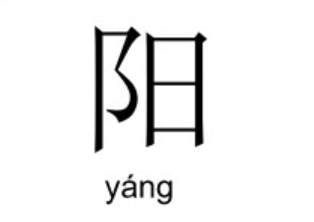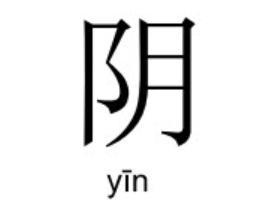Yin and yang tends to be a misunderstood concept in western thought. Let’s take a deeper dive into the theory of yin and yang. In order to better grasp what yin and yang represent , we need to define them separately and have a basic understanding of how they interact together.
What is Yang?

Yang is typically called the masculine form. The concept came from seeing the sunny side of the hill. This aspect is known as the leader and driver behind many things. As such, Yang is an action taker and thus it is the beginning of all things. Think about fire and how it constantly moves and expands outward. When speaking in western terms, Celestial niter is one of the many names given to Yang and its associated energies.
What is Yin?

Yin is a feminine aspect. It comes from the shadow cast upon a hillside. Whereas action is represented by yang, yin represents passivity and receptiveness. Think of how water fills it’s container. Never does it struggle against it to hold its shape.
In the western sense, femininity represents the yin aspect in Chinese metaphysics. From an alchemical stand point this is known as the celestial salt.
How Yin and Yang interact.
Seeing both yin and yang separately gives a good indication for their qualities and functions, however the whole purpose is to see how they work in conjunction with each other. This is how yin and yang work in real time. Without real world application, you may be left thinking they exist as opposites rather than being part of a continuous cycle. In this article, a better view is presented in regards to yin and yang.
1. Yin and yang are not opposites.
A common misconception in western thought is that yin and yang are more often then not opposites. We think of hot and cold as opposites or even left and right. This puts it on a spectrum instead of viewing it as a cycle. Look at the symbol, it is not a line at all, but a circle. Hence Yin and Yang are constantly at play with each other.
Yin and yang are two aspects of a cycle. The fundamental issue with thinking of them as opposites is that they seem diametrically opposed, but a closer inspection reveals the cycle of play inherent to their design. To further solidify this, lets look at a secondary principle.
2. Yin and Yang create each other.
That’s right, yin and yang both create one another. Confused? Here is an example, take fire and its opposite, water. Does water create fire? Can fire create water? If we think in terms of opposites the answer is a resounding no. But in yin and yang theory that answer is actually yes, it just seems a bit more complicated. Water creates fire in two ways, first it nourishes and grows wood and plants that can feed as fuel for the fire. Secondly, water can decide to not be present and dry things out. Wait…where is the fire’s creation as that isn’t enough.
A fire starts during a lightning strike in a dry forest. What does the lightning strike have associated with it? A cloud, made of water. Strange to think of it this way, but this is one example of how yin and yang will create one another.
Another example is fire creating water. The sun is a fiery orb of light in the sky. It feeds the world with it’s light and heat. That heat will cause the water on Earth to evaporate. The evaporated moisture will then ascend and condense in the sky leading to cloud formation. These clouds in turn become dense and rain upon the land feeding the plant life. If the proper conditions present itself, the clouds will become thunderclouds.
3. Yin and yang exist mutually.
Both must both exist alongside and with each other. Otherwise, how can they create each other? True separation cannot be achieved. Let’s speak on dry and wet. Dry and wet are considered opposites. For this case, dry is the yang while wet will be the yin.
Go back to the wood from the forest. If the wood is moistened thoroughly, would that be yin or yang? It is more yin, but not entirely waterlogged. There must exist some dryness within the wood. Why is that so? For a tree to maintain equilibrium and “drink” water, it must have a section that is empty or void.
This causes a change in pressure that aids the water to rise against gravity and moisten the uppermost aspects of the tree. The leaves can serve this purpose. As they bask in the sun and lose moisture via heat and respiration, a dryness forms that allows more moisture to fill the tissues of the tree.

How about if we have dry wood? Dry wood is never completely dry. There always remains a small amount of moisture within it no matter what you do. Another example is alcohol. Ever found 100% alcohol? if you did find some, albeit rare but possible, the simple act of opening allows moisture from the air to enter the bottle. The alcohol then absorbs this small percentage of water and voila! No longer is it 100%. The alcohol will not become water, but enough water will enter that it will stabilized to 98-99% alcohol.
4.Yin and yang control each other, the principle of balance.
This principle affirms the need for balance. However it gives a final perspective into the grand scheme of things. Although they both create each other and exist mutually, yin and yang both keep each other in check. This creates a state of homeostasis or equilibrium. When both yin and yang are present, they must keep each other in check to prevent being thrown off balance. If yin and yang are thrown off balance, then chaos ensues.
ow about an example? Imagine a pot of water on a stovetop. When the gas ignites and the flame is blazing, the pot will begin to heat and transfer that heat to the water. Eventually the water will boil. However, the temperature of the water never matches the temperature of the flame. Nor will the pot match the flame’s temperature while there is water in it. The water dictates how hot the pot can get. Although the fire is hotter than the temperature of the boiling water, the temperature of the water and thus the pot is the upper limit for the temperature. This is yin keeping yang in check.
If the water dries out, then a temperature increase in the pot occurs, and depending on how hot the fire is, damage or warping can occur. This is an example of yin and yang out of balance.
The overarching goal is to return to balance. Keep the flow of yin and yang going. That will keep them in check. This is but only scratching the surface.
If you want to learn more about Qigong or it’s medical aspects, follow the blog here, or check out the FAQs. Prefer to speak to a real person? Book a free consultation here.
